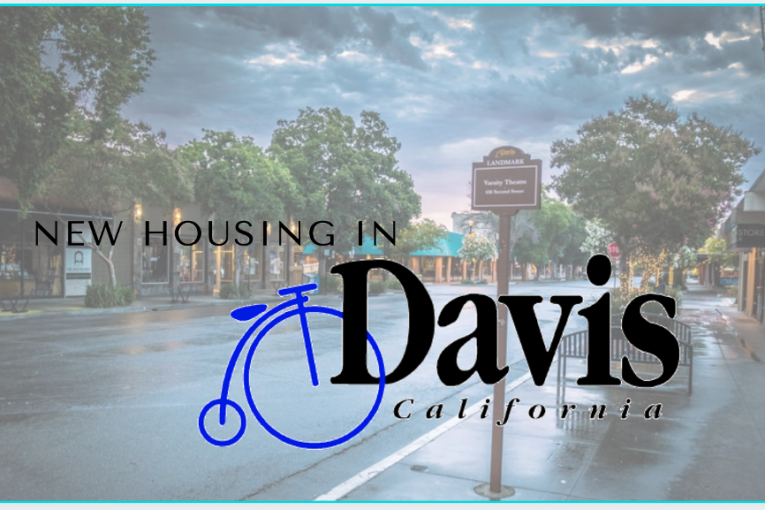
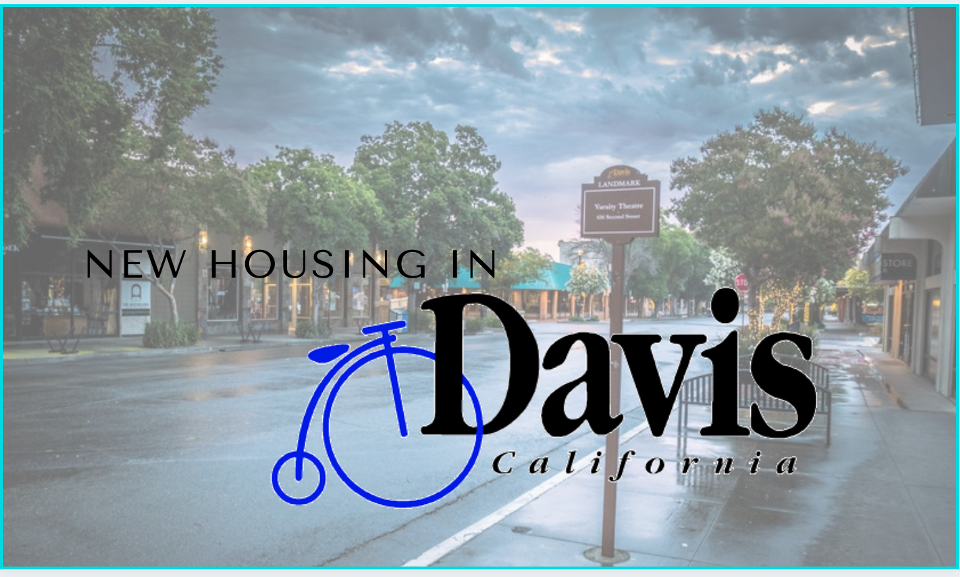
By David M. Greenwald
Executive Editor
Davis, CA – The Council Subcommittee on Long Range Growth is returning to council with a proposal that might crack the door open slightly to the possibility of a project being put to the voters by November 2024.
The subcommittee is comprised of Mayor Will Arnold and Councilmember Bapu Vaitla.
When the council on April 4 received a status report, in addition to pushing off future consideration of projects until at least 2025, a key focus was developing a set of criteria by which to evaluate proposed and future annexation projects.
According to the subcommittee, “The interim criteria would serve as a bridge and provide guidance for consideration of such proposals until such time that an updated General Plan is crafted and adopted.”
What is coming forth is a scoring rubric based on LEED ND, modified to be more applicable to the Davis context.
The staff report notes, “LEED is a widely recognized and used green building rating system and has been used to evaluate many projects both nationally and in California (including in Davis) over the years.” They add, “While the LEED rating system is designed for individual buildings, LEED also introduced a program for evaluation of  neighborhood proposals, called LEED ND. LEED for Neighborhood Development (LEED ND) was created to help foster better, more sustainable, well-connected neighborhoods and considers a wide range of important factors.”
neighborhood proposals, called LEED ND. LEED for Neighborhood Development (LEED ND) was created to help foster better, more sustainable, well-connected neighborhoods and considers a wide range of important factors.”
Some of the key considerations: location, open space, walkable streets, compact development, neighborhood connections, mixed uses, affordable housing, transportation, and energy efficiency.
The report notes, “After review of LEED ND the Council Subcommittee and staff incorporated adjustments to the LEED ND scoring system to reflect nuances of Davis land use policy, and to adjust weighting of certain factors that may necessitate higher priority consideration locally.”
According to the recommendation, “This scoring rubric is being suggested as a mechanism to assist the City Council in evaluating various peripheral proposals for Council consideration of direction to staff to undertake review of one or more of them.”
They add, “This scoring rubric is intended to be a tool for evaluation only and not to be a sole determinant in and of itself on what proposal(s) the Council may wish to embark on review of. Additionally, the rubric is intended to supplement, not replace, already existing city standards, ordinance, policies, and other criteria required of development proposals.”
The recommendation suggests that self-scoring by applicants could be undertaken immediately for each proposal with submittals provided to the city and then reviewed by staff in order to assess accuracy and validity.
These findings could be presented to the council for consideration of next steps—including proceeding with an EIR—as soon as June 20.
Staff believes that the initial self-scoring could be completed by June 12, with applicants submitting their self-assessment and justifications for any blank responses.
“Applicants electing to adjust their proposal to reflect claimed points on the self-assessment are encouraged to do so. In this case—i.e., where the self-assessment doesn’t reflect the existing pre-application or application—a revised pre-application or application should be submitted before the initiation of an EIR process,” the report added.
To see the full chart – click here.
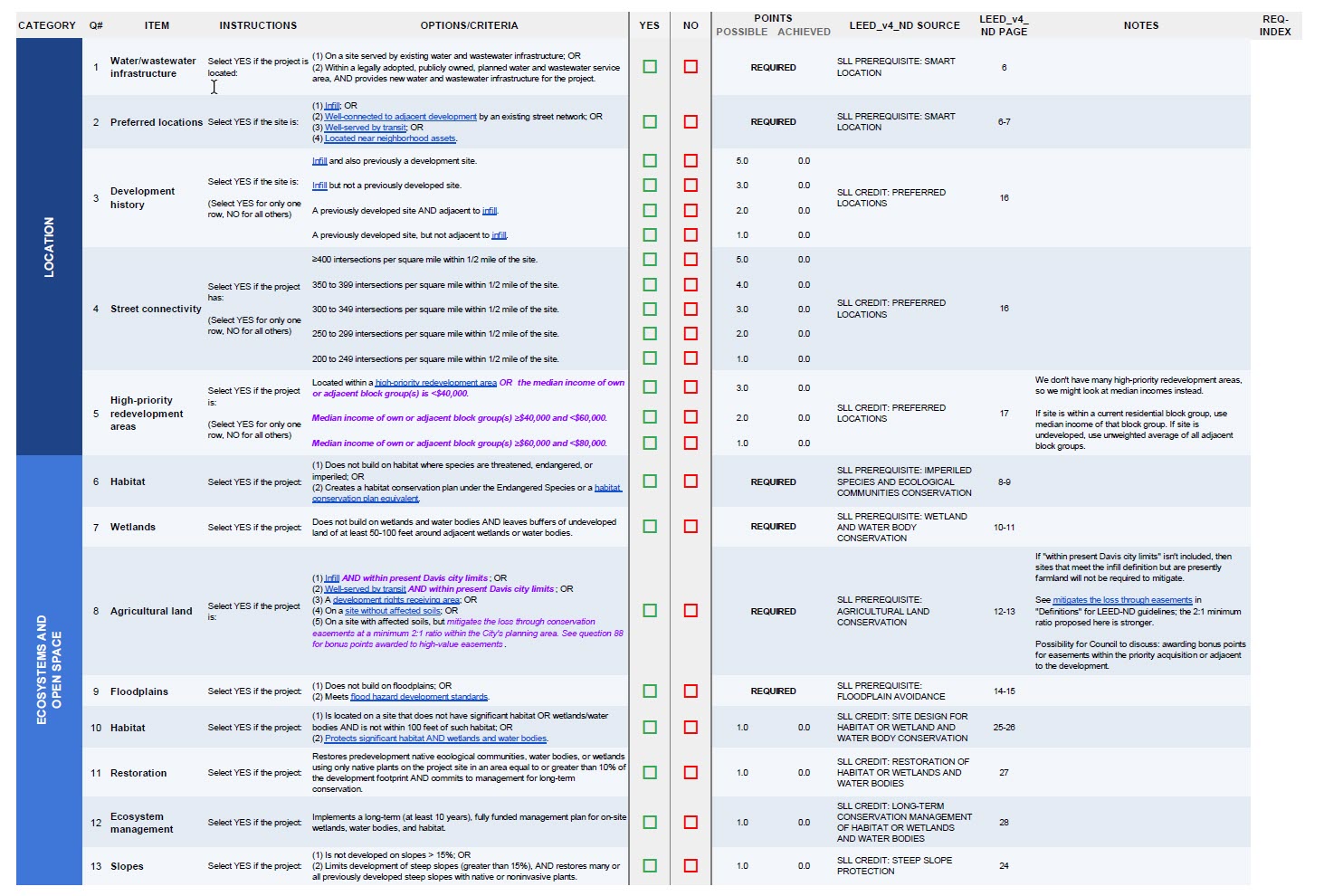
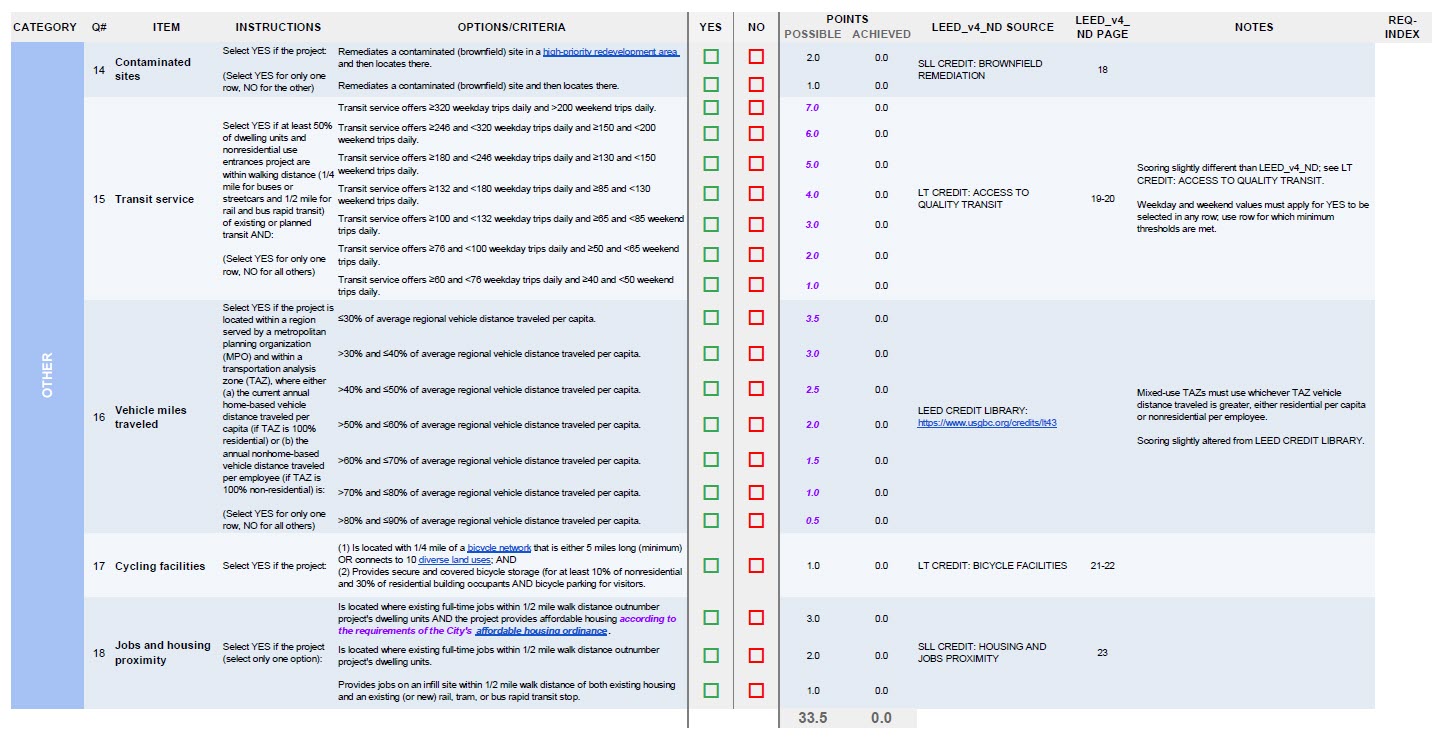
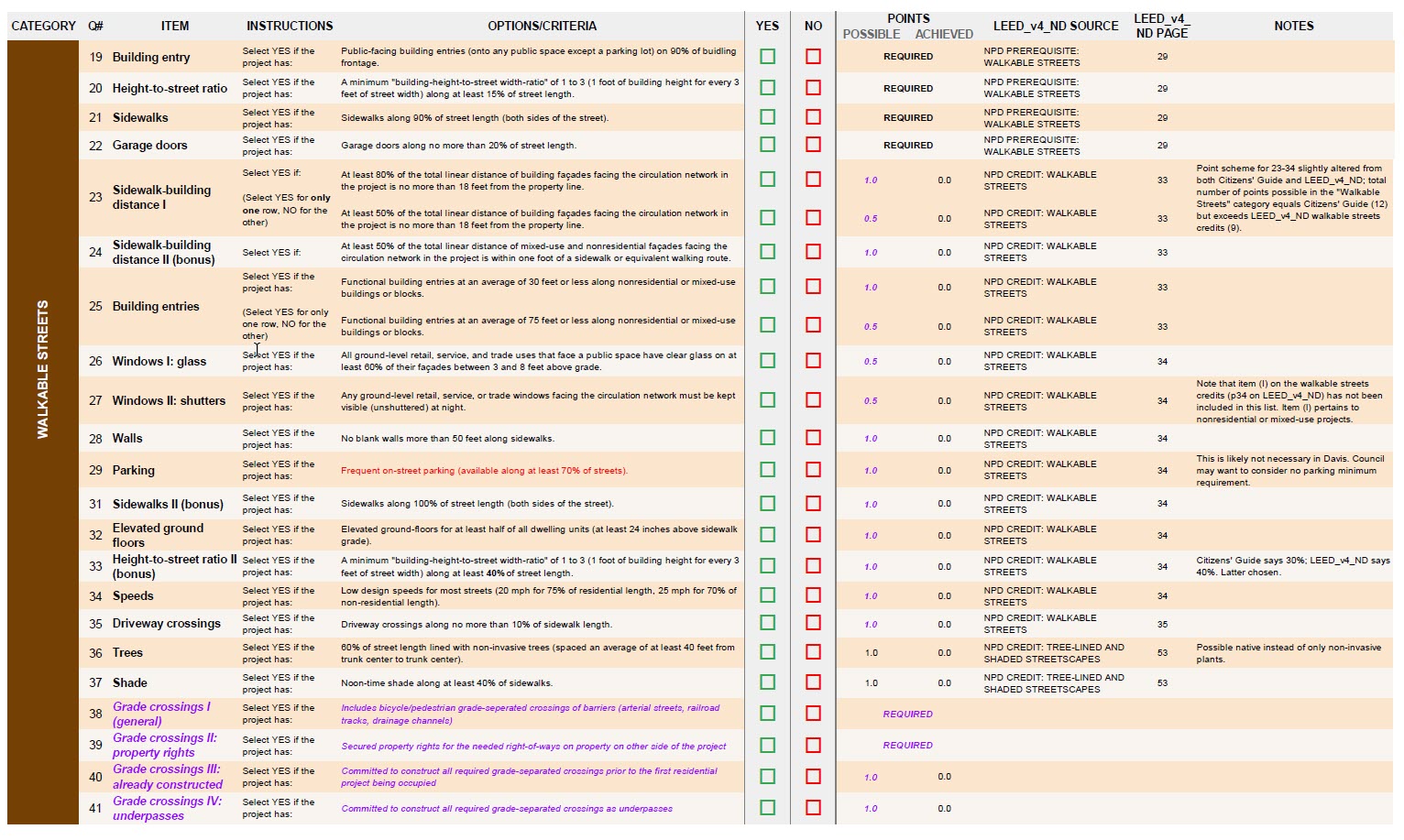
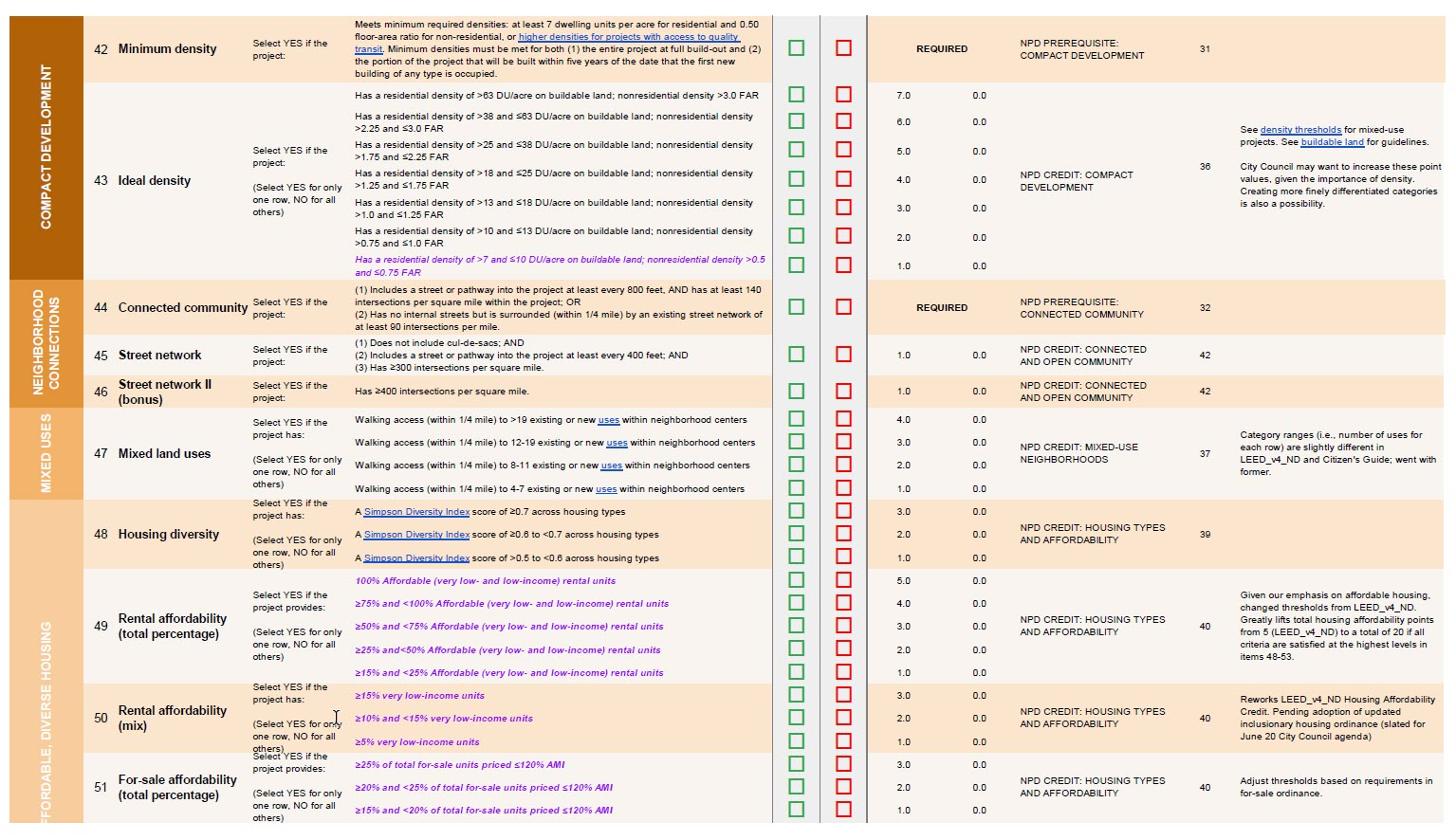
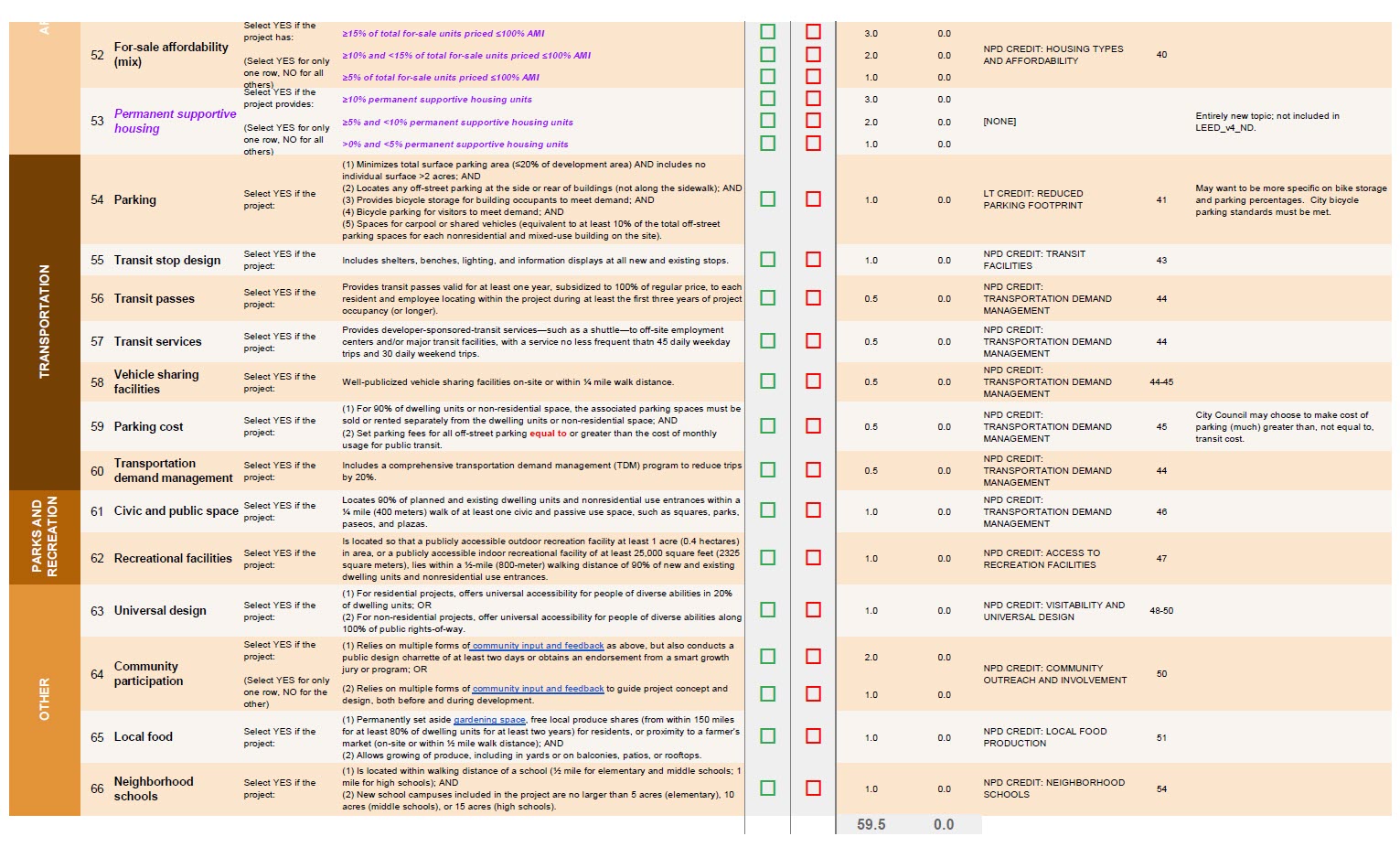
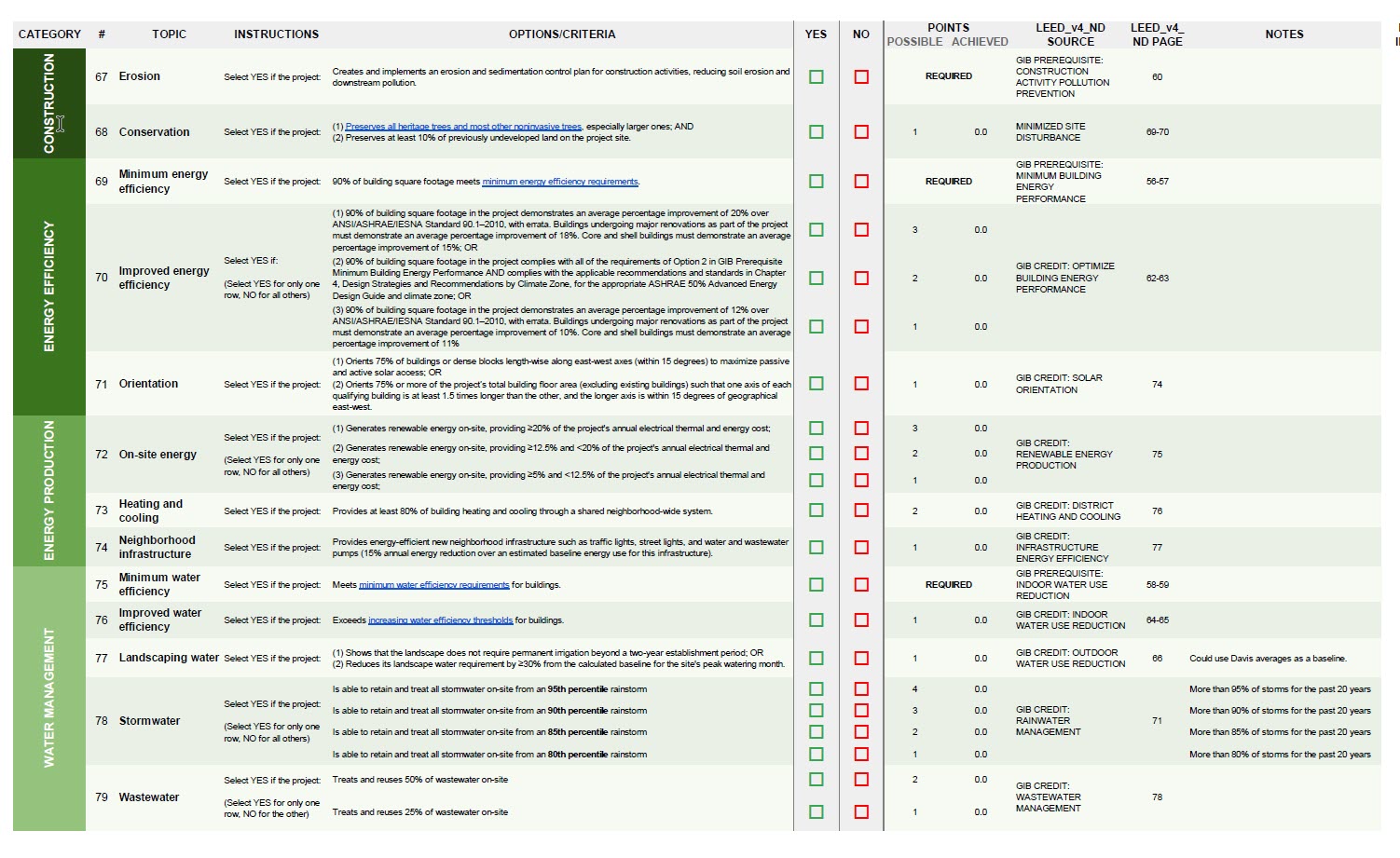
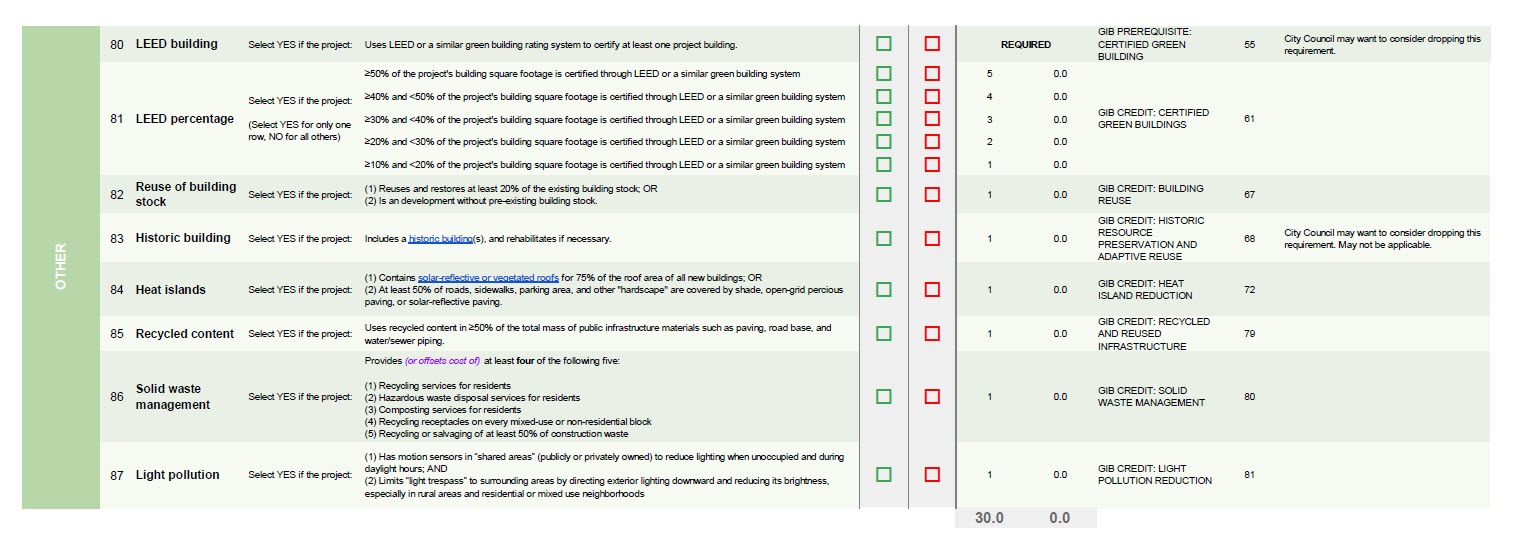
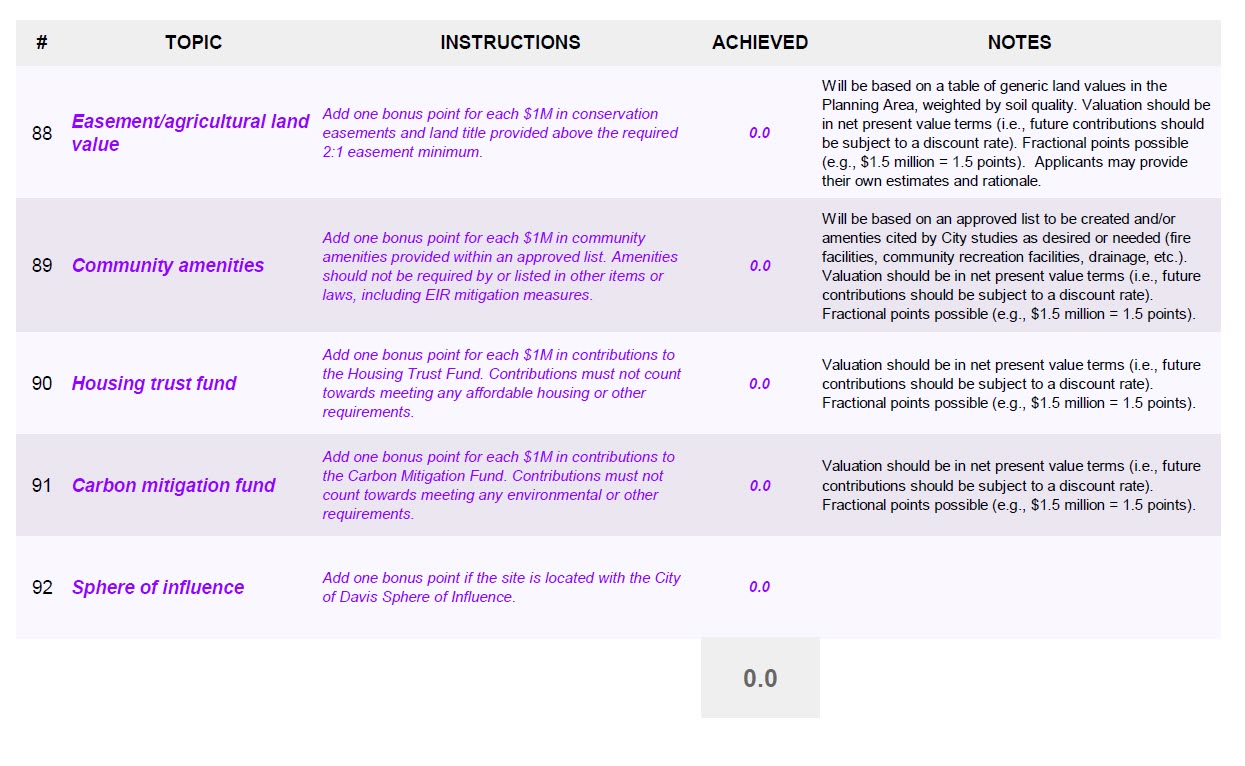







Kafka comes to Davis.
I usually get literary references, but this one eludes me. Do you care to elaborate on what you meant Ron?
This looks, at a quick review of the table, to be extremely comprehensive and would certainly make a good starting point.
The only quibble I have is that, as usual, trees get short shrift (which seems odd for a LEED evaluation). There is lots about conserving trees that are on site but nothing about mandating pavement coverage with tree shade, selection of appropriate species, some kind of minimum for tree planting in various situations. In other words the LEED approach does a good job of evaluating tree conservation, but doesn’t address trees for the future in new developments.
Other than that, I think that this approach, coupled with Robb Davis’ path forward posted yesterday, gives me hope that some new housing might be on the ballot in 2024 and might actually get built within a couple of years.
Great job by Bapu and Will.
I second Don’s comments. One thing missing is affordability. One of the criteria should be percentage of homes with sale price below $601,000 with a target of 100%. Deed restrictions controlling price appreciation would be another good criteria to add.
For peripheral projects Senior Surface Water Rights equal to the water demand of the development is essential. Water is the most precious commodity we have.
Affordability is covered in line 49 to 51
Covered? No hard numbers. Most Davis residents could not tell you what X% of AMI is. How does AMI translate into a purchase price?
Nothing about deed restrictions that preserve the affordability of each specific unit.
There is a mention of trees on line 36 – not saying its sufficient and 37 deals with shade.
Yes, a rather cursory. mention. Tree specs are evaluated by staff and the tree commission, but it would be better if developers were incentivized to go above and beyond. It’s just surprising to me that the requirements are barely covered especially in comparison to the level of detail given to other aspects.
Remember that they said it is a starting point, not a done deal. I suggest that the Council should forward this to the relevant Commissions immediately for review and suggestions for consistency with various City policies such at the CAAP and Urban Forestry Plan.
No one cares about what some self-certified survey shows. Reminds me of a public commenter (in regard to the Target proposal, some 15 years or so ago) that I remember to this day – since the message was so clear.
He said something to the effect of, “I couldn’t care less what Target does in regard to its own building”. He was concerned about the impact it would have “outside” of the property.
To which I thought, “right on”. Especially since he was so blatantly unapologetic in tone.
(Though truth be told, I’ve personally/subsequently changed my mind about Target. But absolutely not due to any LEED survey.)
Much more recently, another commenter (on this blog) essentially stated that any large-scale peripheral proposal had better address essentially all future/estimated RHNA targets for him to even consider voting for it.
As such, surveys submitted by developers should ask that question, rather than any nonsense that’s actually on the surveys. Especially since the state’s targets are (supposedly) a primary argument of proponents in the first place.
And if it’s not addressed, you can be sure that it will become an issue during a campaign. Especially with 4 other proposals “waiting in the wings”. (The argument being that voters will need to approve ALL of them, in regard to the state’s targets. And I doubt this would be a “winning strategy” for any of them.)
And as I recall, the more-recent commenter figured that a 100 acre site could address all of the RHNA targets (e.g., 400 acres “not needed” to address those targets).
Put THAT on the ballot, and it might have a better chance. And could also make the other 4 proposals “go away” for awhile.
And developers can then stop filling out nonsensical surveys that no one cares about.
But for those who do care about what’s on-site, I’d suggest a survey asking if toxics (e.g., from an adjacent, unlined former landfill) have been adequately monitored, what they’re planning to do to ensure safety (and not have it become a city responsibility), whether or not the site is partially in a flood zone (with the same type of follow-up questions), what type of infrastructure they’re promising to include to ensure safe bicycle/pedestrian access to the rest of the city, the ongoing, permanent and increasing cost to the city to staff an on-site fire station or any other facility//infrastructure that would otherwise not be needed, etc..
But again, those type of potential survey questions only address problems created on-site, not off-site. Now, if you want to talk about off-site impacts, there will supposedly be an entire EIR that will address those. Therefore, I guess you can “skip” the survey questions regarding that.